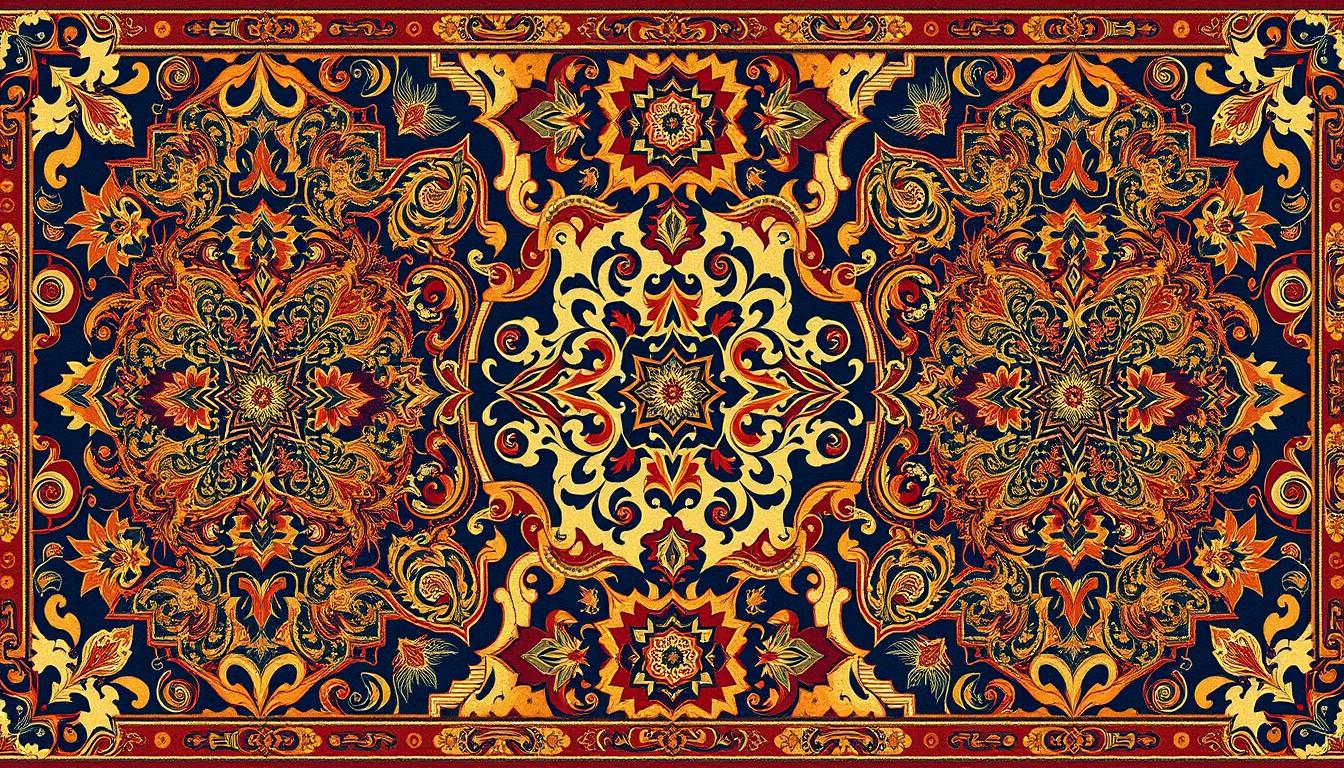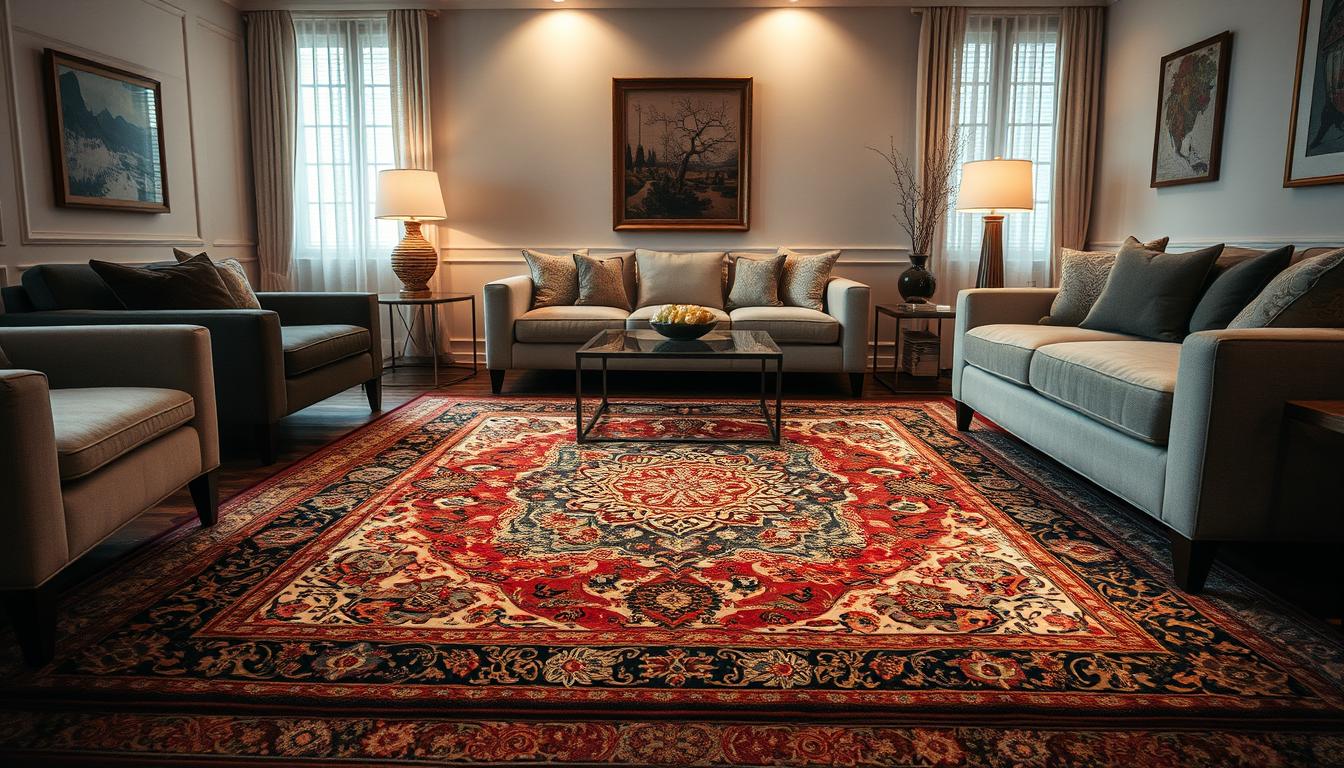
7 Timeless Facts About Oriental Rugs

Have you ever wondered why these intricate textiles have remained coveted treasures across continents for over 900 years? While many view them as mere floor coverings, their true significance lies in centuries of cultural storytelling and technical mastery.
From nomadic tribal weavings to royal court masterpieces, these creations blend practicality with profound artistic expression. Every knot represents hours of labor, every color choice carries symbolic meaning, and every pattern preserves ancestral traditions. Their versatility spans sacred spaces to modern living rooms, serving as prayer surfaces, wall art, and statement pieces that anchor interior design.
You'll uncover how generations of artisans transformed wool, silk, and cotton into enduring cultural documents. Unlike mass-produced carpets, each piece reflects regional identities through geometric motifs and natural dyes. Some patterns took years to complete, with techniques guarded like family secrets.
These textiles became diplomatic currency during the Renaissance, influencing European art movements. Today, they bridge historical craftsmanship with contemporary aesthetics, proving timeless design transcends eras. Their layered value—as functional objects, investment assets, and cultural artifacts—explains their undiminished global appeal.
Key Takeaways
- Centuries-old weaving techniques preserve cultural heritage in every thread
- Symbolic patterns convey stories and traditions through geometric precision
- Natural materials like wool and silk ensure durability and vibrant coloration
- Multi-functional use extends beyond flooring to wall decor and sacred textiles
- Artisan craftsmanship increases value over time compared to machine-made copies
- Regional styles reflect distinct cultural identities through motif variations
Introduction to Oriental Rugs
Across continents and generations, master weavers have turned threads into cultural chronicles. Their creations blend geometric precision with organic dyes, forming tactile maps of human experience. UNESCO’s recognition of weaving traditions in Iran and Azerbaijan highlights their role as living heritage.
Defining the Art and Craft
Skilled hands transform wool and silk into storytelling canvases. Time-honored techniques passed through families produce intricate patterns—some requiring years to complete. Natural materials ensure vibrant colors deepen with age, unlike synthetic alternatives.
Cultural and Historical Significance
These textiles preserve vanished languages of symbolism. Floral motifs might honor nature’s cycles, while geometric shapes encode spiritual beliefs. Every knot connects you to artisans who wove prayers and histories into functional art.
Regional styles reveal trade routes and migrations through borrowed designs. From Anatolian villages to Persian courts, collaborative efforts shaped evolving aesthetics. Today, they bridge eras—equally at home in museums or modern lofts.
what is oriental rug: A Beginner's Guide
Stepping into the world of handcrafted floor coverings reveals a realm where every thread tells a story. These textiles originate from skilled artisans across Asia, from Persian workshops to Himalayan villages, blending generations of knowledge into tactile masterpieces.

Understanding the Basics
Authentic pieces feature tightly tied knots on a foundation of vertical and horizontal threads. This pile construction creates dense surfaces that withstand decades of use. Artisans use only natural fibers—wool and silk dominate premium creations, while cotton often forms durable bases.
Regional traditions dictate patterns, with geometric shapes in Turkish designs contrasting China’s floral motifs. Natural dyes from plants and minerals produce colors that mature gracefully, unlike synthetic alternatives that fade. You’ll notice slight asymmetries—proof of human craftsmanship rather than machine perfection.
True value lies in the months or years spent weaving each piece. A single square inch might contain hundreds of knots, explaining why family workshops often collaborate on larger carpets. This labor-intensive process ensures no two creations are identical, transforming functional items into heirloom-quality art.
Historical Evolution of Oriental Rugs
Buried beneath Siberian ice for millennia, a frozen tomb preserved humanity's oldest woven treasure. This remarkable survival story begins with the Pazyryk carpet—a 2,500-year-old masterpiece revealing advanced knotting techniques long before modern looms existed.
Ancient Origins and Early Evidence
Russian archaeologist Sergei Rudenko's 1949 discovery stunned historians. The Pazyryk carpet's 3600 symmetrical knots per square decimeter prove sophisticated weaving methods flourished during the Iron Age. Clay tablets from Mesopotamia's Mari kingdom detail specialized craftsmen called kāşiru creating luxury floor coverings for palaces 4,000 years ago.
Nuzi palace records list carpets as throne decorations for King Idrimi. These ancient inventories confirm textiles served as status symbols long before becoming trade commodities. The craft's origin remains debated—some scholars argue multiple cultures developed knotting independently.
Influence of Nomadic and Settled Cultures
Nomadic tribes crafted portable pile-woven textiles mimicking animal hides for tent insulation. Settled societies later refined these techniques into elaborate courtly art. Central Asian migrations spread knowledge along trade routes, creating the diverse "rug belt" stretching from Turkey to China.
Greek texts like Xenophon's Anabasis describe carpets as diplomatic gifts between empires. This cultural exchange birthed hybrid designs—nomadic geometric patterns merging with urban floral motifs. Large looms in cities enabled monumental creations, while tribal weavers preserved traditional knots through oral teachings.
Geographical Regions and Cultural Heritage
Imagine tracing a map where every thread represents a different culture’s fingerprint. The Rug Belt forms an artistic corridor spanning 9,000 miles, connecting deserts, mountains, and bustling trade cities. This zone birthed distinct weaving styles shaped by local climates and communal values.

Traversing the Rug Belt
From Morocco’s Berber villages to Pakistan’s Indus Valley, artisans adapt techniques to their environment. Mountainous Armenia favors dense wool knots for insulation, while silk-rich China creates luminous ceremonial pieces. You’ll find Kurdish weavers using tribal symbols in Turkey’s borders and Persian floral motifs near India’s Kashmir region.
Regional Specialties and Traditions
South Africa’s Ilinge village proves innovation thrives beyond traditional hubs. During the 1980s, Xhosa crafters blended native patterns with classic designs, creating vibrant hybrids. Tibetan highlands produce lustrous carpets from yak wool, while Anatolian workshops perfect double-knot symmetry.
Trade routes acted as creative highways. Caravans carried Turkish dyes to Persian dyers, inspiring new color palettes. This exchange birthed signature elements—like Caucasus’ bold geometrics or India’s intricate Mughal-inspired vines. Each area’s cultural heritage remains woven into every decision, from dye recipes to motif placement.
Key Characteristics and Timeless Designs
Patterns in handwoven textiles act as visual fingerprints, revealing centuries of artistic evolution. Master artisans balance mathematical precision with symbolic storytelling through deliberate arrangements of shapes and botanicals.
Floral Motifs and Geometric Patterns
Central fields framed by elaborate borders create structured canvases for repetition. Diagonal rows of hexagons and rhomboids form rhythmic sequences, often hiding stylized flowers within angular forms. This blend transforms rigid shapes into dynamic compositions.
Naturalistic blossoms contrast sharply with abstract geometries. Persian workshops perfected rose medallions, while Anatolian tribes embedded tulips in star-filled squares. These cultural signatures evolved through trade, yet maintained core principles of balance and proportion.
Borders serve dual purposes – decorative frames and symbolic guardians. Secondary bands often feature kufic-inspired motifs that echo ancient scripts. The interplay between main and supporting elements creates depth without overwhelming the eye.
Timeless layouts persist because they adapt. Modern interpretations retain classic structures while experimenting with scale. Whether enhancing minimalist interiors or traditional spaces, these designs maintain visual harmony through calculated repetition and symbolic layering.
Materials and Weaving Techniques
Your fingertips tell the story first—the springy resilience of wool, the crisp structure of cotton, the liquid drape of silk. These natural materials form the backbone of enduring textiles, chosen for properties perfected over centuries of craftsmanship.
Natural Fibers: Wool, Cotton, and Silk
Wool’s coiled fibers dominate pile construction, resisting stains while cradling footsteps. Cold-climate sheep produce the most durable strands, spun into yarn that drinks dye like parchment. Cotton’s tensile strength anchors designs, stretched taut on looms without warping.
Silk transforms rugs into luminous canvases. Royal workshops used it to map celestial gardens with jewel-toned precision. Though less common today, its shimmer elevates special commissions, revealing patterns in high-definition clarity.
Knotting Methods and Weft Weaving
Artisans tie thousands of asymmetrical knots per square foot, building texture row by row. Weft threads lock each knot in place, creating surfaces that withstand decades. Proper maintenance varies by technique—learn best practices for preserving flat-weave pieces through our detailed cleaning guide.
Regional traditions dictate knot density and pile height. Nomadic tribes favored lower piles for portability, while palace workshops crafted plush surfaces fit for royalty. Every choice—from fiber blend to knot count—shapes a rug’s character and longevity.
FAQ
How do authentic pieces differ from mass-produced copies?
Genuine items use hand-spun wool, silk, or cotton with natural dyes. Look for uneven knotting on the back and slight imperfections. Machine-made versions lack the depth of color and intricate details found in traditional craftsmanship.
Why do Persian and Turkish styles dominate collections?
Persian creations feature intricate floral motifs tied to Iran’s Safavid dynasty, while Turkish works showcase bold geometric patterns from Anatolian tribes. Both regions perfected distinct knotting methods, influencing global weaving traditions.
Can sunlight damage these textiles over time?
Prolonged exposure fades natural dyes, especially in indigo or madder-root hues. Rotate placement periodically and use UV-filtering window treatments to preserve vibrancy. Silk fibers are particularly sensitive to direct light.
What cultural symbols appear in tribal designs?
Nomadic groups embed protective motifs like scorpions (defense) or ram’s horns (strength). Chinese variants often include dragons for power, while Tibetan examples use Buddhist symbols like the endless knot.
Which materials ensure longevity in high-traffic areas?
Tightly knotted wool withstands wear best, with Turkish double knots offering superior durability. Cotton foundations prevent stretching, while silk accents add sheen without compromising structure. Avoid jute or synthetic blends.
How does age impact market value?
Pre-1920s pieces with vegetable dyes and intact fringes command premiums. Rare tribal artifacts from extinct workshops or documented royal commissions often appreciate due to historical significance and scarcity.
Why do some patterns avoid floral elements?
Geometric dominance stems from tribal origins where portable looms limited complex curves. Turkmen weavers used octagonal gul motifs, while Berber cultures in North Africa employed zigzag lines symbolizing water or mountains.









